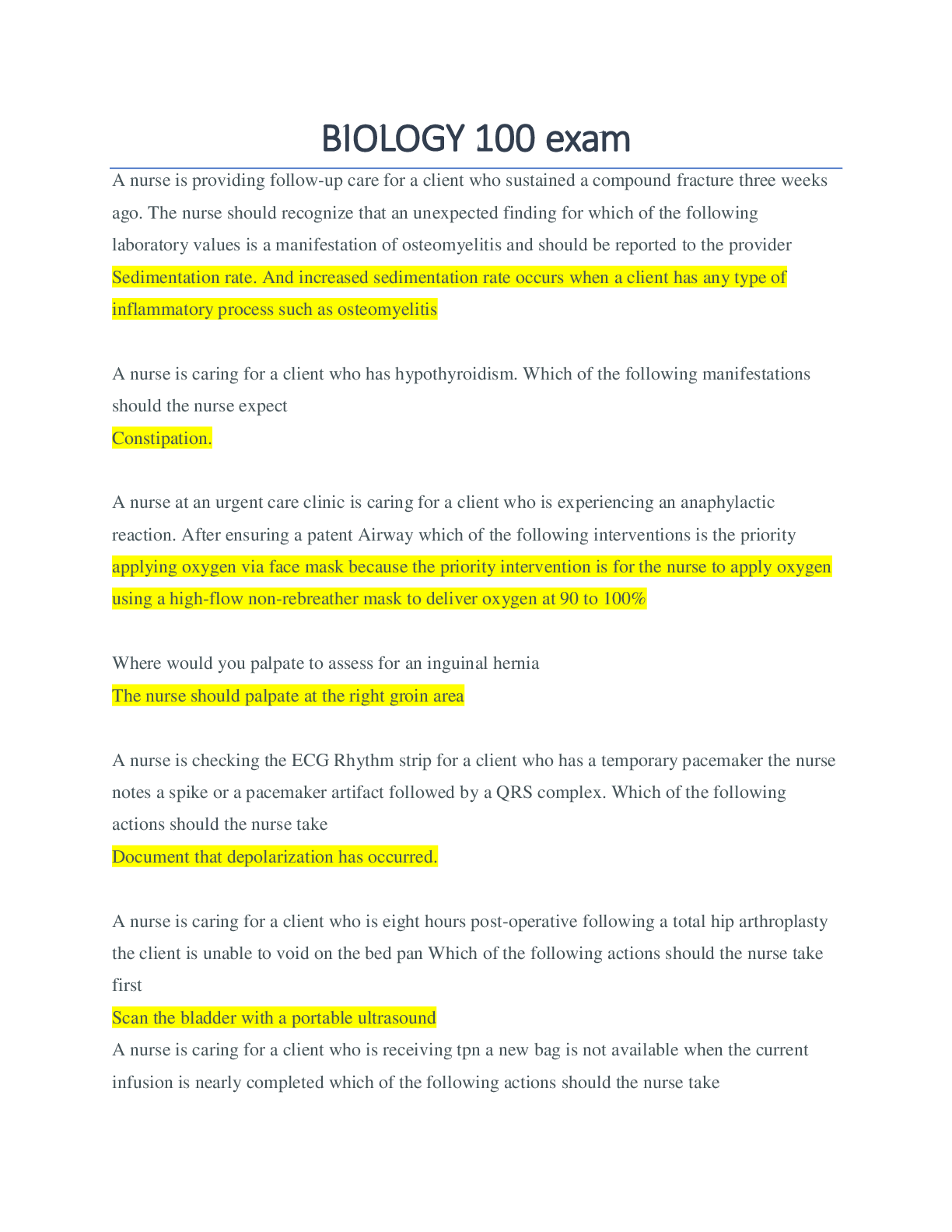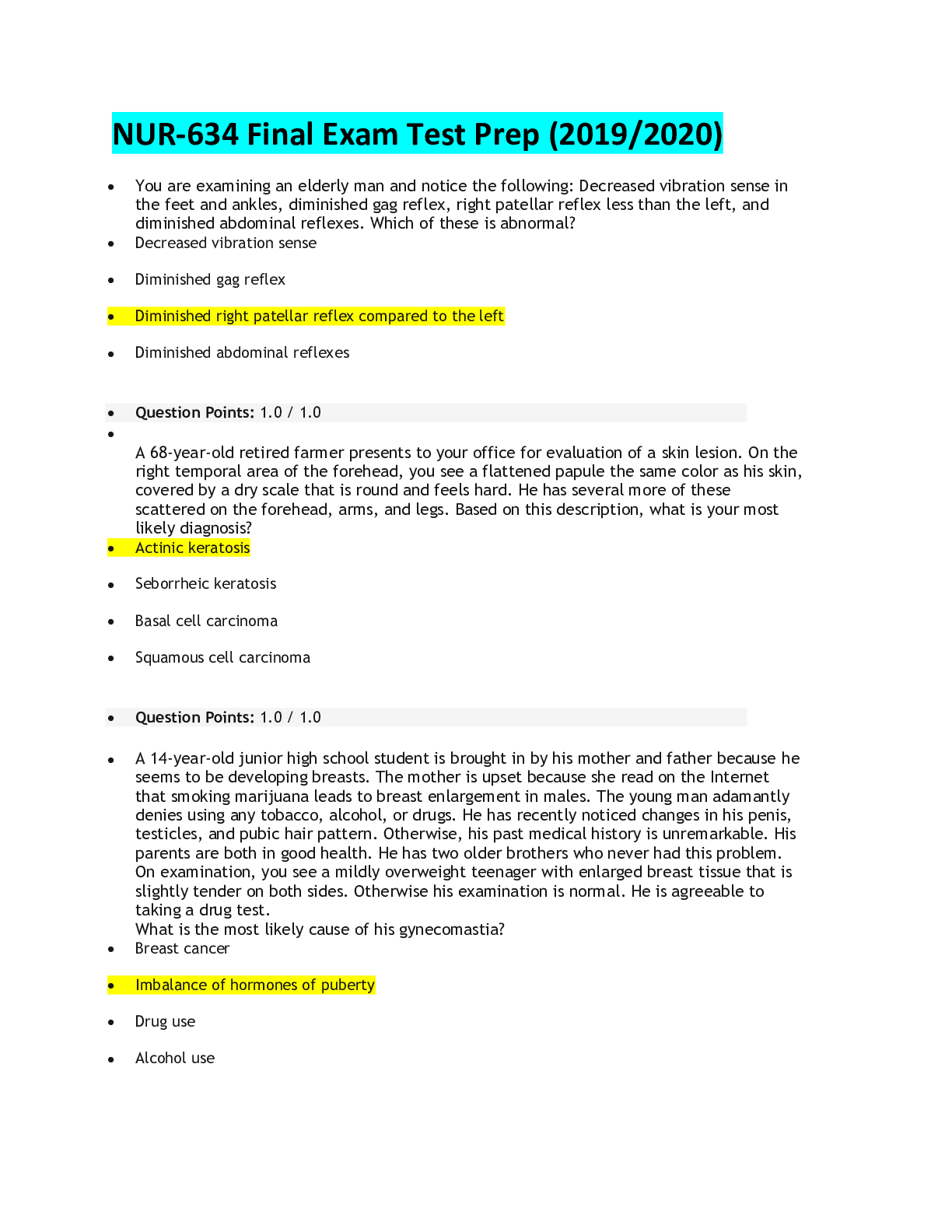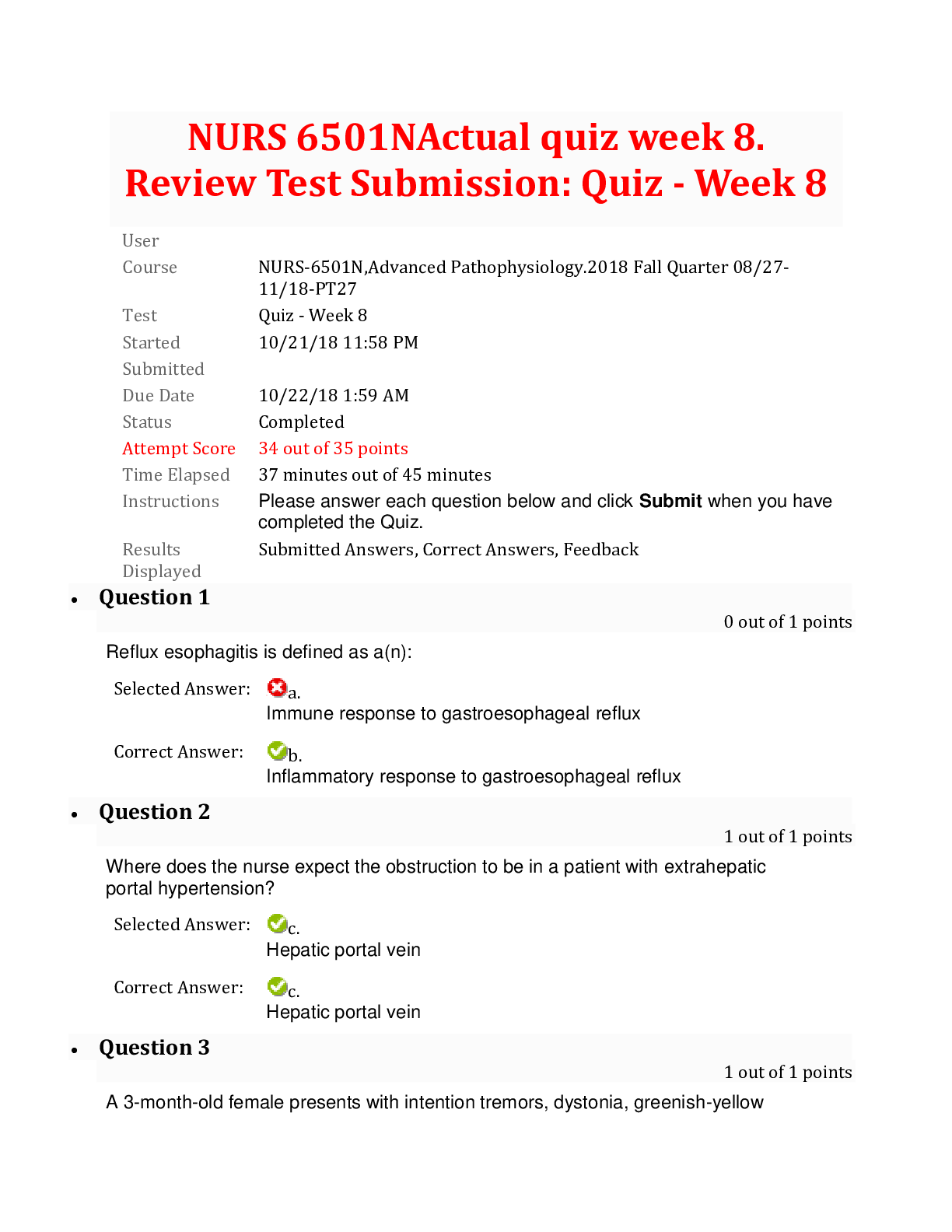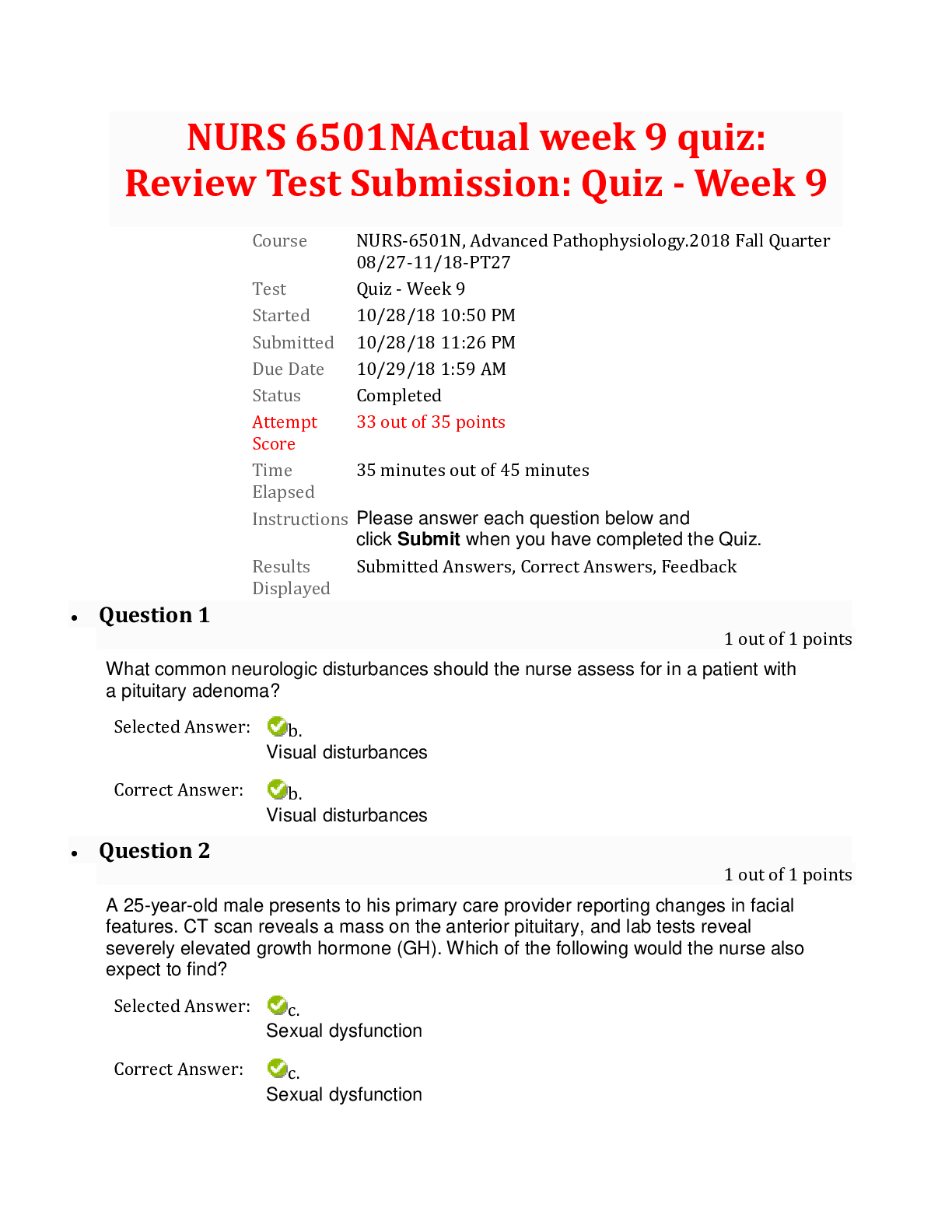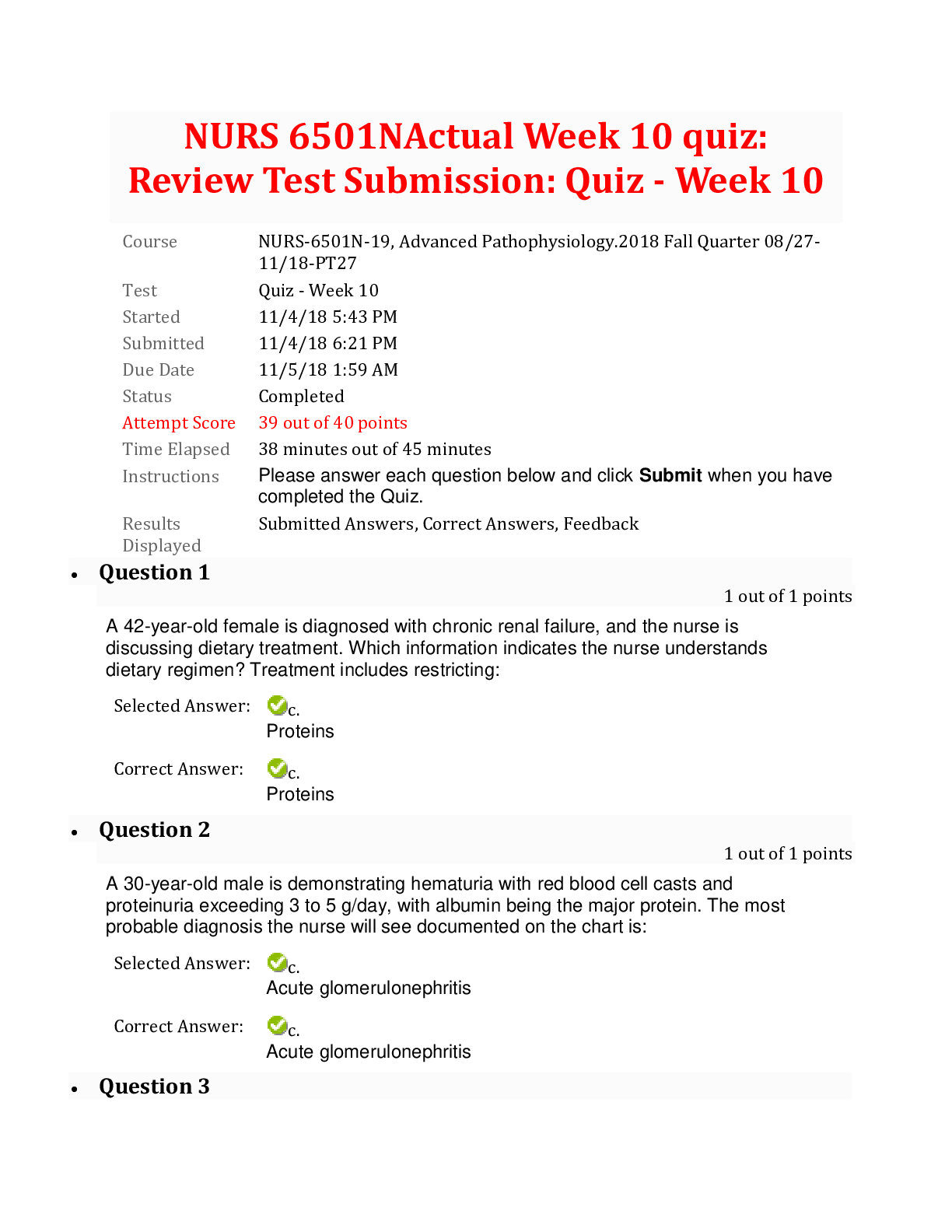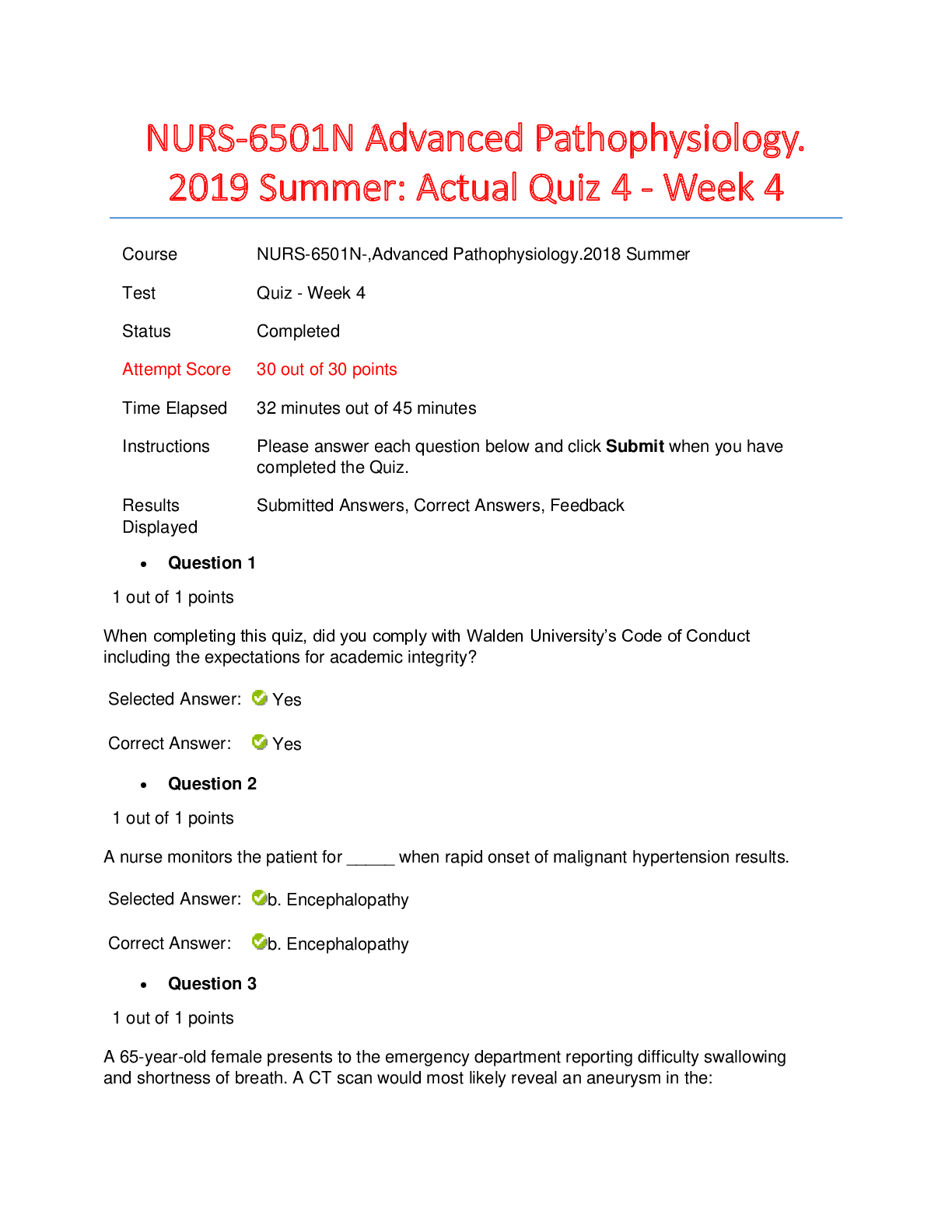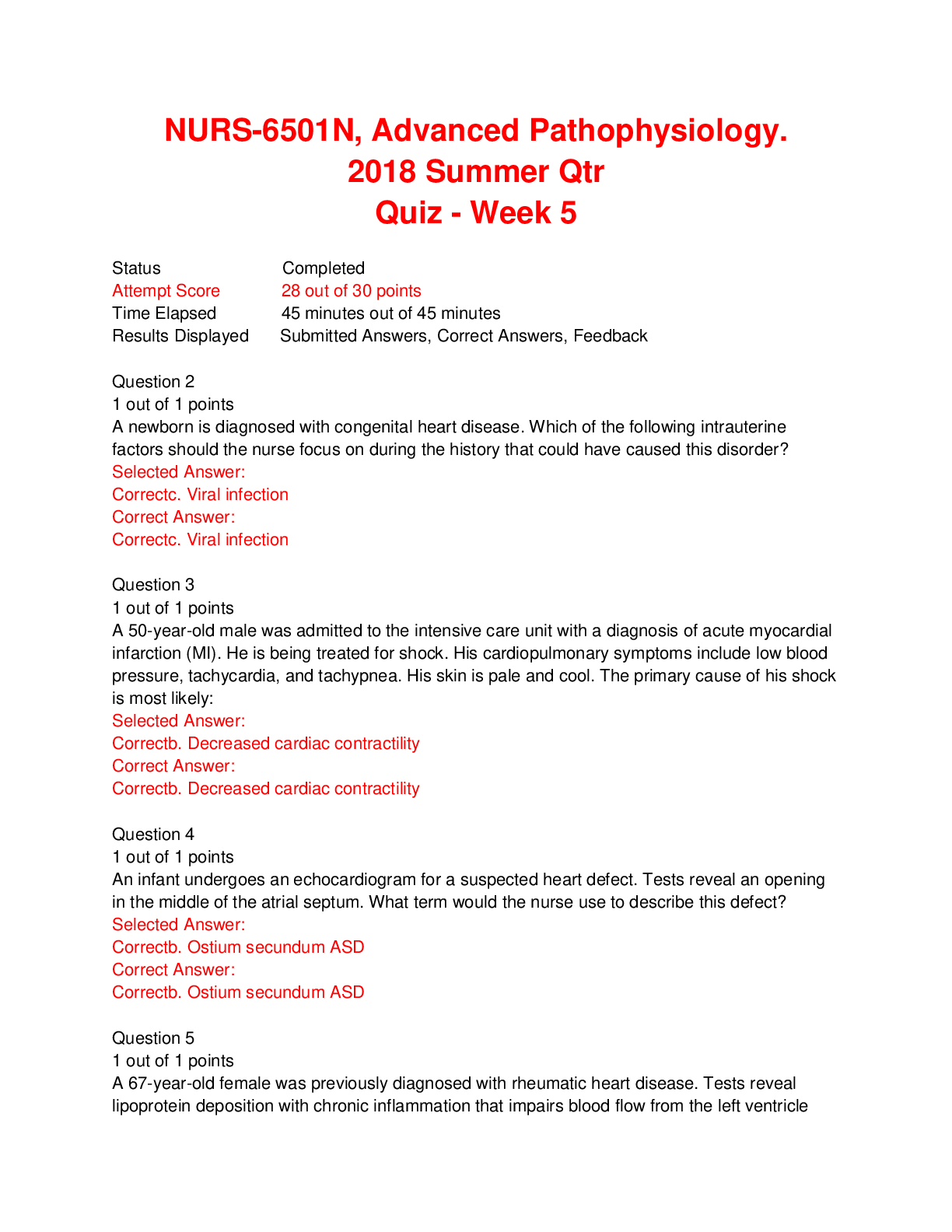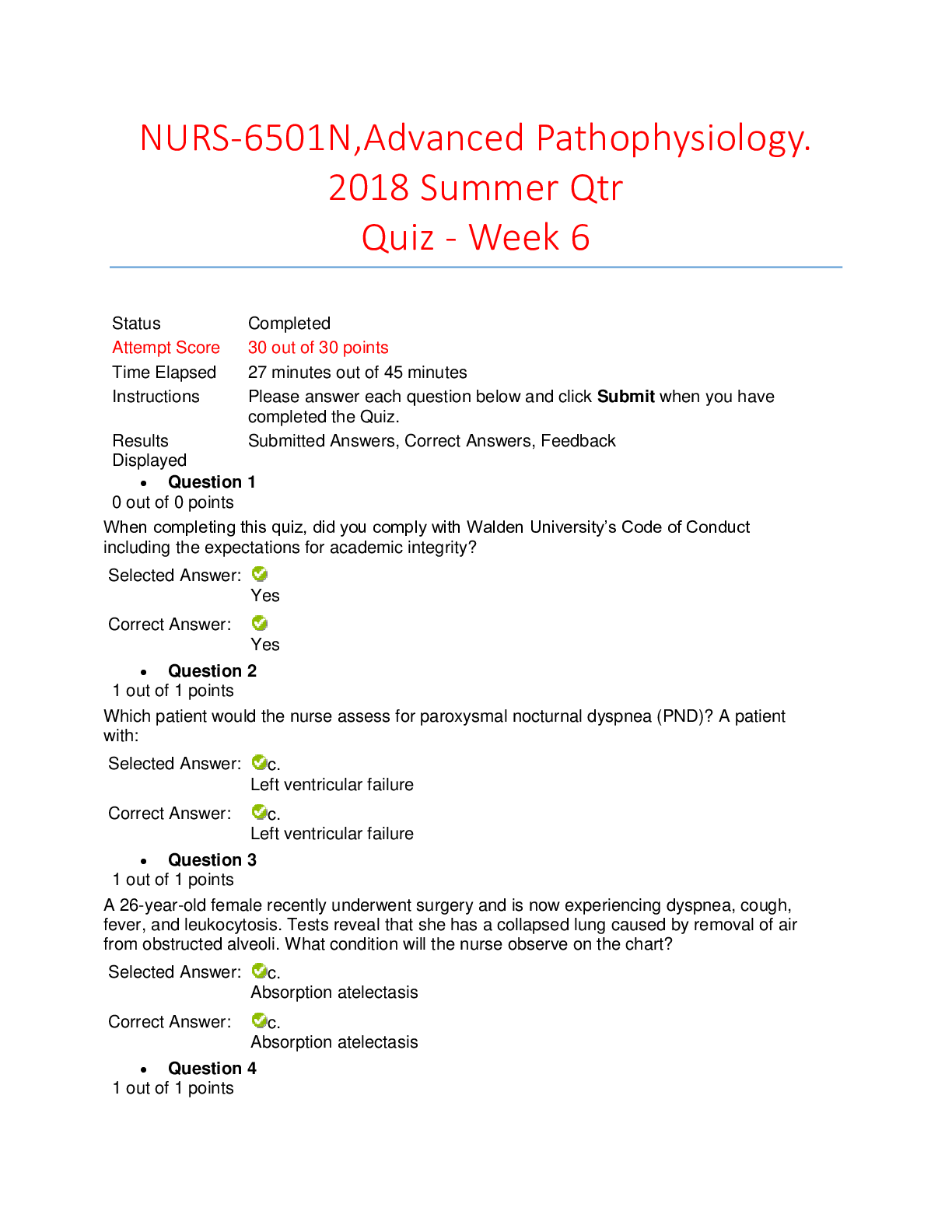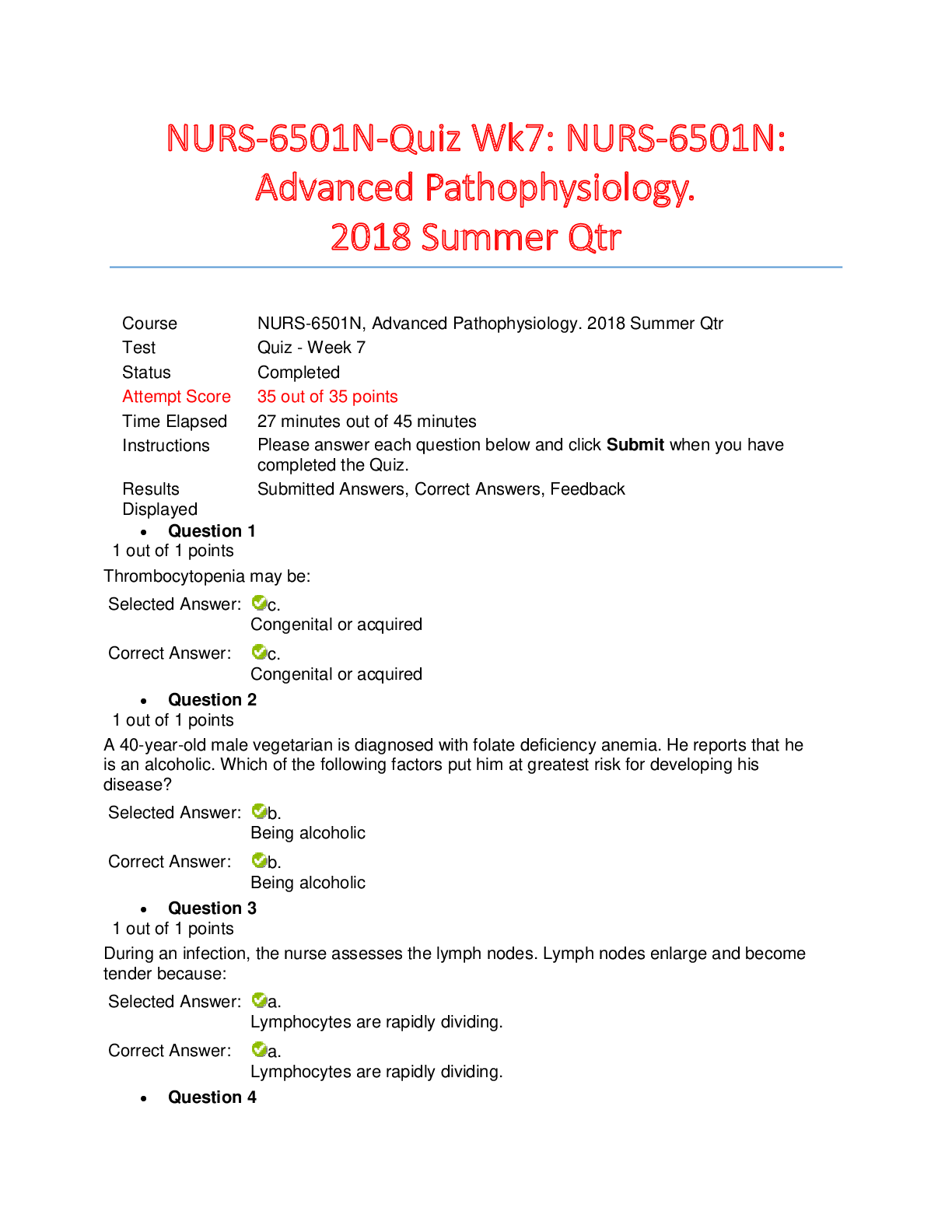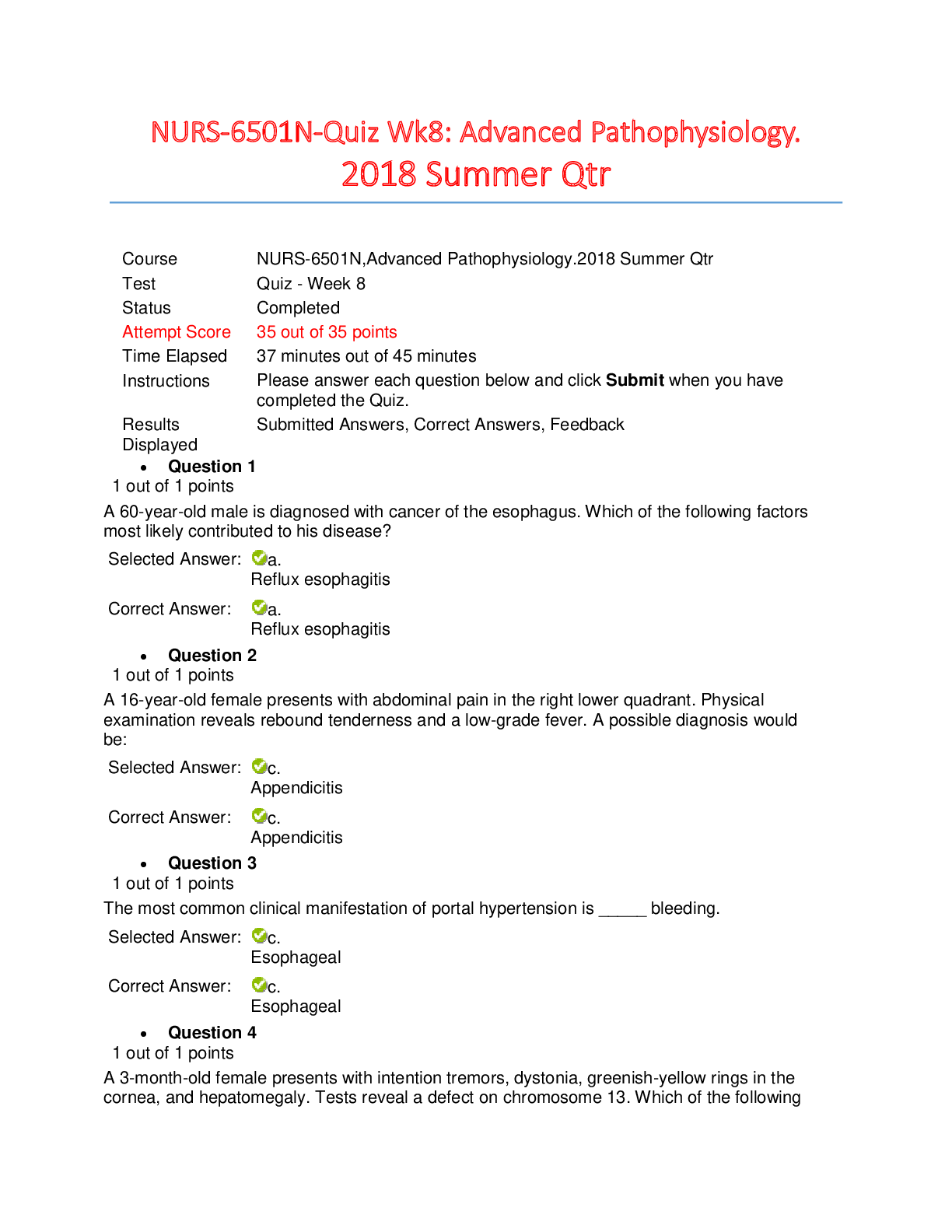Economics > QUESTIONS & ANSWERS > Carleton UniversityECON 2030tbch19 CHAPTER 19 Asymmetric Information < ALL QUESTIONS WITH 100% CORRE (All)
Carleton UniversityECON 2030tbch19 CHAPTER 19 Asymmetric Information < ALL QUESTIONS WITH 100% CORRECT ANSWERS AND DETAILED EXPLANATIONS >
Document Content and Description Below
CHAPTER 19 Asymmetric Information MULTIPLE CHOICE Choose the one alternative that best completes the statement or answers the question. TRUE/FALSE/EXPLAIN QUESTIONS 1) Adverse selection occurs whe... n an agreement encourages undesirable behavior. 2) Signals can help prevent adverse selection as long as a false signal is costly to the person sending it. 3) If sellers of good cars and sellers of lemons both offer a warranty on their car, consumers will then be able to tell which cars are the lemons. 4) A firm is more likely to adopt multiple brand names for the same product when the good is a non-durable. 5) In the tourist-trap model, a consumer might pay more than marginal cost for a good sold in a competitive market if the cost of possibly finding the good cheaper is more than the markup over marginal cost. PROBLEMS 1) Explain what may occur when a buyer and a seller have unequal amounts of limited information. Describe two different types of problems that may arise when asymmetric information exists. 2) The XYZ Co. is hiring salespersons. They will be paid a very attractive hourly rate that is independent of how much they sell. Describe an adverse selection that would take place. Describe a moral hazard that would take place. 3) How can a warranty at the seller's expense signal that a product is of high quality? 4) Explain why some people who are applying for a job at a bank dress up, arrive early, and have their paperwork neatly completed for the job interview. 5) The market for used cars is shown in Figure 19.1. Buyers cannot tell whether any given car is a lemon. The percent of all cars that are lemons is θ. What value of θ is necessary for all cars to be sold? 6) The market for used cars is shown in Figure 19.1. Ten percent (10%) of all cars are lemons. A mechanic is offering to inspect a car for sale and certify that a car is not a lemon. If car sellers are risk neutral, what is the highest price that a car seller would pay for such a service? Who would buy this service? 7) The market for used cars is shown in Figure 19.1. Buyers cannot tell whether any given car is a lemon. For all cars offered for sale to be sold, the percent of all cars that are lemons is θ. What happens to θ if car buyers incur a $100 transaction cost when buying a used car? 8) The XYZ Co. sells shirts. Shirts with the company label on the tag are perceived to be of higher quality than shirts with the store's label. Yet, shirts are of identical quality regardless of label. The demand for perceived high-quality shirts is ph = 50 - qh. The demand for perceived low-quality shirts is p1 = 10 + ph - q1. The firm can produce shirts at TC = qh + q1. How many shirts does the firm label as low quality and how many as high quality? What prices are charged? 9) Describe how a firm that sells only one brand of bleach may be able to increase its profit if it re-labels some of its bleach. 10) In a competitive market with large search costs, many firms, and asymmetric information, why is the monopoly price the only possible single-price equilibrium? 11) Two firms, A and B, are faced with a decision on making investments in safety. They each currently earn profit of $500 each. A safety investment would cost $100 paid by the firm that makes the investment and would lower both firms' labor costs by $75 per firm. Draw the payoff matrix for this game and determine the Nash equilibrium. Does it make sense for the firms in the industry to ask the government to force them to make the investment? Explain. 12) Joe wants to achieve the highest position possible with the XYZ Co. During the interview, he tells them he is capable of performing many difficult tasks. The company feels there is an 10% chance he is lying. Given the payoff matrix in Figure 19.3, what job level will the company offer to Joe? Why? 107 Chapter 19/Asymmetric Information 13) Suppose 10% of all workers are of high ability. If a firm knows a worker's ability, workers of low ability are paid $20,000 and workers of high ability are paid $30,000. A college degree can signal ability, and the cost of the degree is $11,000. Will there be a pooling equilibrium or a separating equilibrium? 14) The cost, c, of a college education that serves only as a signal of a high-quality worker is $20,000. The wage of a known high-quality worker, wh, is $75,000. The wage for a known low-quality worker, wl, is $50,000. For what value of the share of the work force that is of high quality, t, is a pooling equilibrium possible? [Show More]
Last updated: 2 years ago
Preview 1 out of 6 pages

Buy this document to get the full access instantly
Instant Download Access after purchase
Buy NowInstant download
We Accept:

Reviews( 0 )
$11.00
Can't find what you want? Try our AI powered Search
Document information
Connected school, study & course
About the document
Uploaded On
Jun 12, 2021
Number of pages
6
Written in
Additional information
This document has been written for:
Uploaded
Jun 12, 2021
Downloads
0
Views
104



.png)
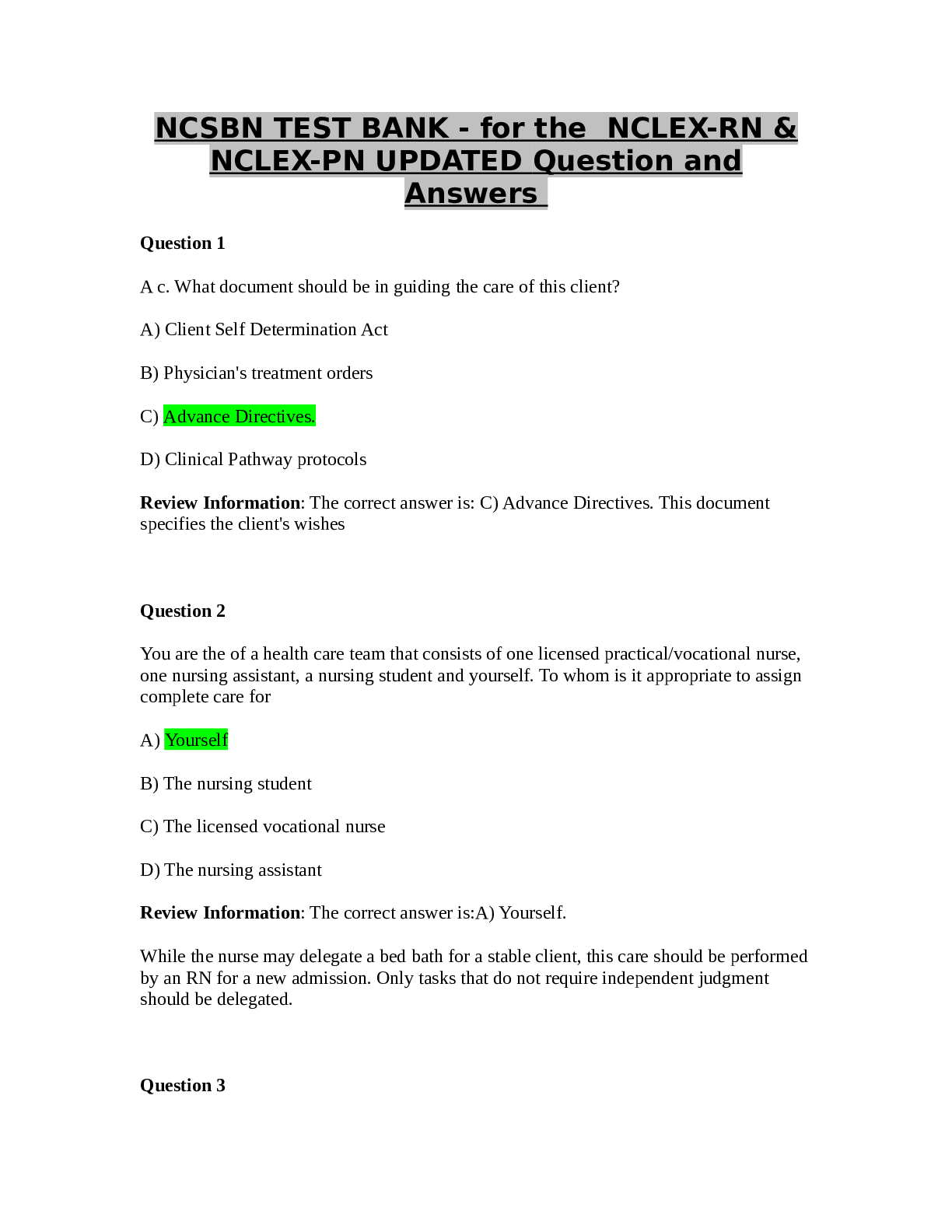
.png)
.png)
.png)


.png)


